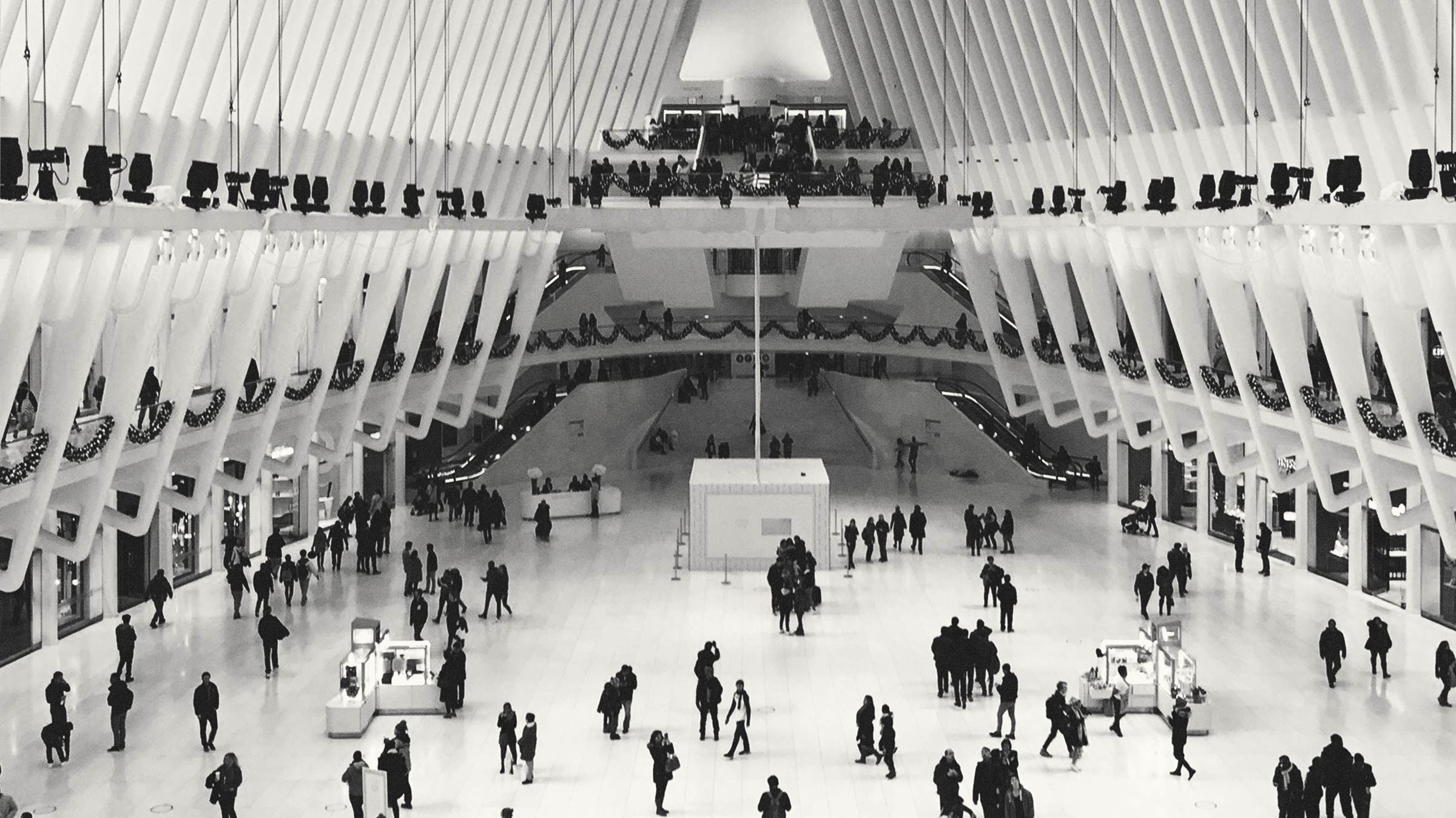In a recent lecture on the future of retail, the historian and fashion writer Laura McLaws Helms took a closer look at the possibilities of community spaces in post-mall suburbia.
The golden age of the mall is long over if you didn’t know. The Great Recession, online retailers, and an on-going urban exodus suburbs has left us with the ghostly, post-apocalyptic remains of JC Penny, Macy’s, Sears, and Mervyn’s—with more empty shells of consumerism to follow. Last year, Credit Suisse projected that up to 25 percent of malls will close by 2022. Yet, what may be the closing of one chapter in the post-war story of American retail, could be the opening of a new era of public spaces. It’s intriguing reclamation that the fashion writer and historian Laura McLaws Helms took note of last week in a talk with Express’ Chief Customer Experience Officer Jim Hilt at the Chandelier Creative offices in New York City. From the decline of the big-box retail properties, according to Helms, blooms the potential for new community-oriented outcomes as dead malls are transformed and repurposed. During this conversation, held amongst the artbook-lined walls of the Chandelier’s penthouse, the pair discussed the rise of the modern retail experience and its emerging threats in front of an audience of young fashion professionals. Malls, Helms declared, “are being given a new life outside of consumerism.”
In the late ‘70s, the culture power of the mall was on the rise. But the father of this uniquely American space, Victor Gruen was already disowning his creation, declaring, in 1978, that he’d like to disclaim his paternity. “I refuse to pay alimony to those bastard developments,” he said in a speech in London. “They destroyed our cities.” Gruen, a Austrian socialist who fled his native country in 1938 had a vision of the mall was as a “third place,” a walkable space for community-building. The mall was to be a foil to the emergent culture of interstates and isolating suburbs.
“He wanted to recreate the plazas of his home city, Vienna, or the town squares and main streets of American cities and towns—a place to come together, to walk, to shop, to live their lives,” Helms explained. The mall, in Gruen’s mind, was to be much more than an assortment of fast retail options but a place in which to foster culture itself. “He imagined that these malls would be mixed-use facilities, with apartments, offices, medical centers, child-care facilities, and libraries.”
America’s first indoor mall was the Southdale Mall in Edina, Minnesota. Opening in 1956, the mall serves as a vivid example how easily Gruen’s optimistic rendering was derailed. After the success of the initial shops that occupied the Southdale, plans to build a lake, residences, and medical facilities were quickly abandoned, as attention turned towards developing more shopping centers. The Southdale Center, today, is surrounded by parking lots today making it the prototype for many thousands of paved over spaces across the country. As Helms pointed out, Gruen’s plan of translating urban community characteristics to the suburbs backfired— convenience malls created simply expedited a post-war exodus from the cities, resulting in the very car-centered suburban sprawl he abhorred. “[Malls] did become a place where people congregate, but not as a community as Gruen hoped—they congregated to shop, to mall walk, to waste time.”
In a twist of fate, the current decline of the American mall may allow for an iteration closer to Gruen’s original vision, Helms contended. Take Hickory Hollow Mall in Tennessee. Declared “dead” in 2012, the mall recently opened after being sold for just $1 million to real estate investor Rajesh Aggarwal and his wife Dr. Reita Aggarwal. Now known as the Global Mall at the Crossings, its spaces that once housed department stores now have community focus. The spaces where Dillard’s and JC Penny once sat are now a satellite campus for Nashville State Community College, which includes a library and recreation center. In this reconfiguring of a formerly blighted piece of real estate, a new attitude reflecting the Middle Eastern and Latinx demographics of the surrounding area has begun to flourish. “The community is building it, ” Dr. Reita Aggarwal told Nashville Public Radio after the mall was reopened in 2013. “When a community builds something, it is theirs.”







